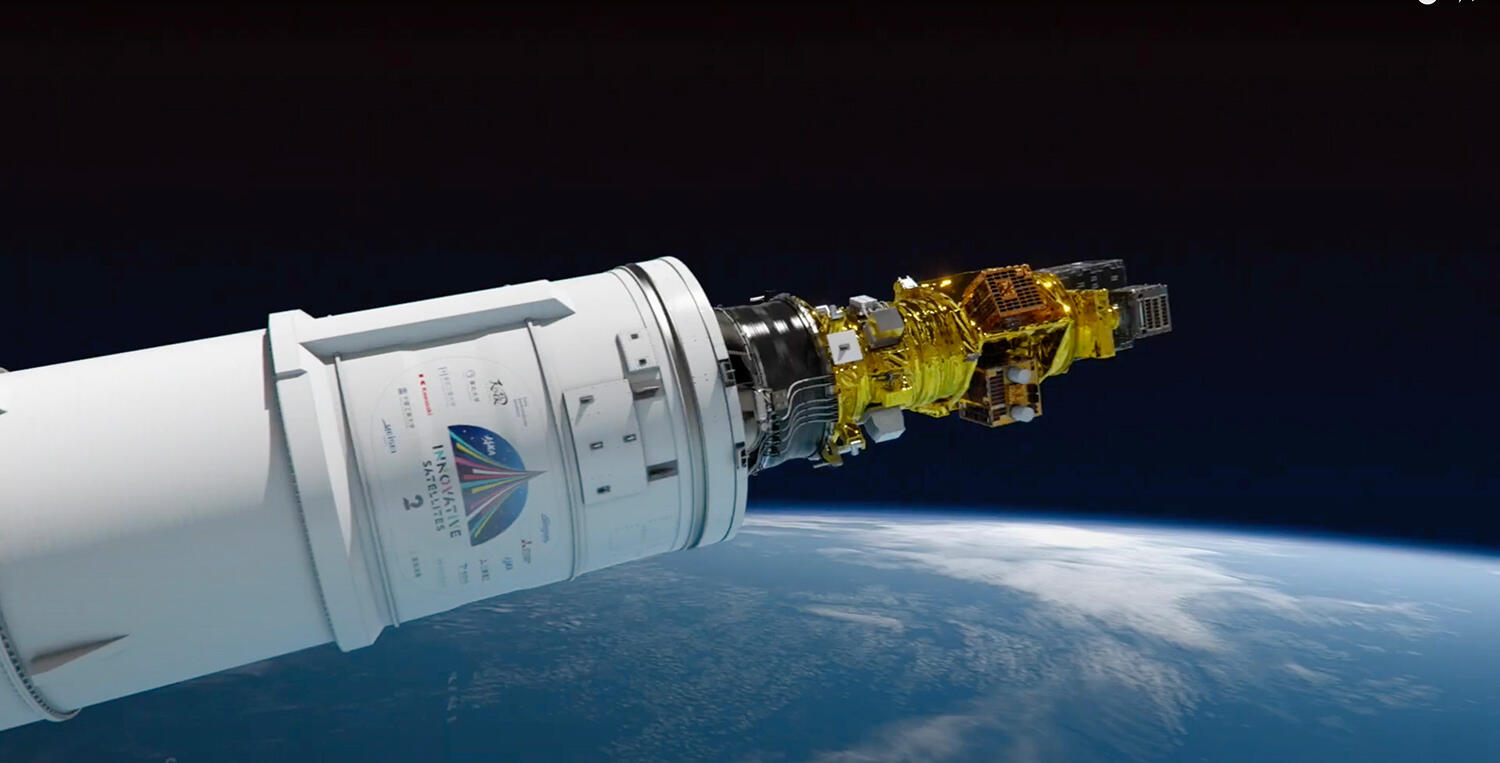
Special Talk: The Special Environment of Space Stimulates Your Curiosity

Special Talk: The Special Environment of Space Stimulates Your Curiosity
The Innovative Satellite Technology Demonstration Program provides universities, research institutes and companies that want to demonstrate new technologies in space with opportunities to do it. KANEKO Yutaka, Head of this program, talked with TAMESUE Dai, who has been giving deep insight into human potential by engaging in a range of fields. In the dialogue, they talked with a focus on "challenge" and from a multifaceted viewpoint.
What is the purpose of the Innovative Satellite Technology Demonstration Program, which has been implemented in space?
KANEKO
Following the launch of Innovative Satellite Technology Demonstration-1 in 2019, we will soon launch Innovative Satellite Technology Demostration-2 to conduct demonstration experiments on the 14 themes that were selected from among applicants to the call for proposals (*Innovative Satellite Technology Demostration-2 was successfully launched on November 9, 2021). Specifically, four microsatellites, four CubeSats and six components are included in the target for demonstration. For example, a board computer named SPRESENSE™ will be mounted on a satellite of JAXA. In this experiment called "SPR," we will test the computer's resistance to radiation in space. In space, there is much more radiation than on the earth, which gives adverse effect to the operation of devices.
TAMESUE
You mean, SPR is intended for use in space in the future?

KANEKO
Yes, indeed. Based on the results of the demonstration experiment, the use of the computer will be expanded to be eventually mounted on artificial satellites and lunar rovers. The moon and Mars are distant from the earth, and there is a communication time lag in proportion to the distance. In particular on Mars, the length of time lag is as many as several ten minutes, which makes it impossible for the crew to receive instructions from the earth in real time. Under such circumstances, you need a high-performance computer that can autonomously think and function also in space.
TAMESUE
I see. What other experiments will you conduct?
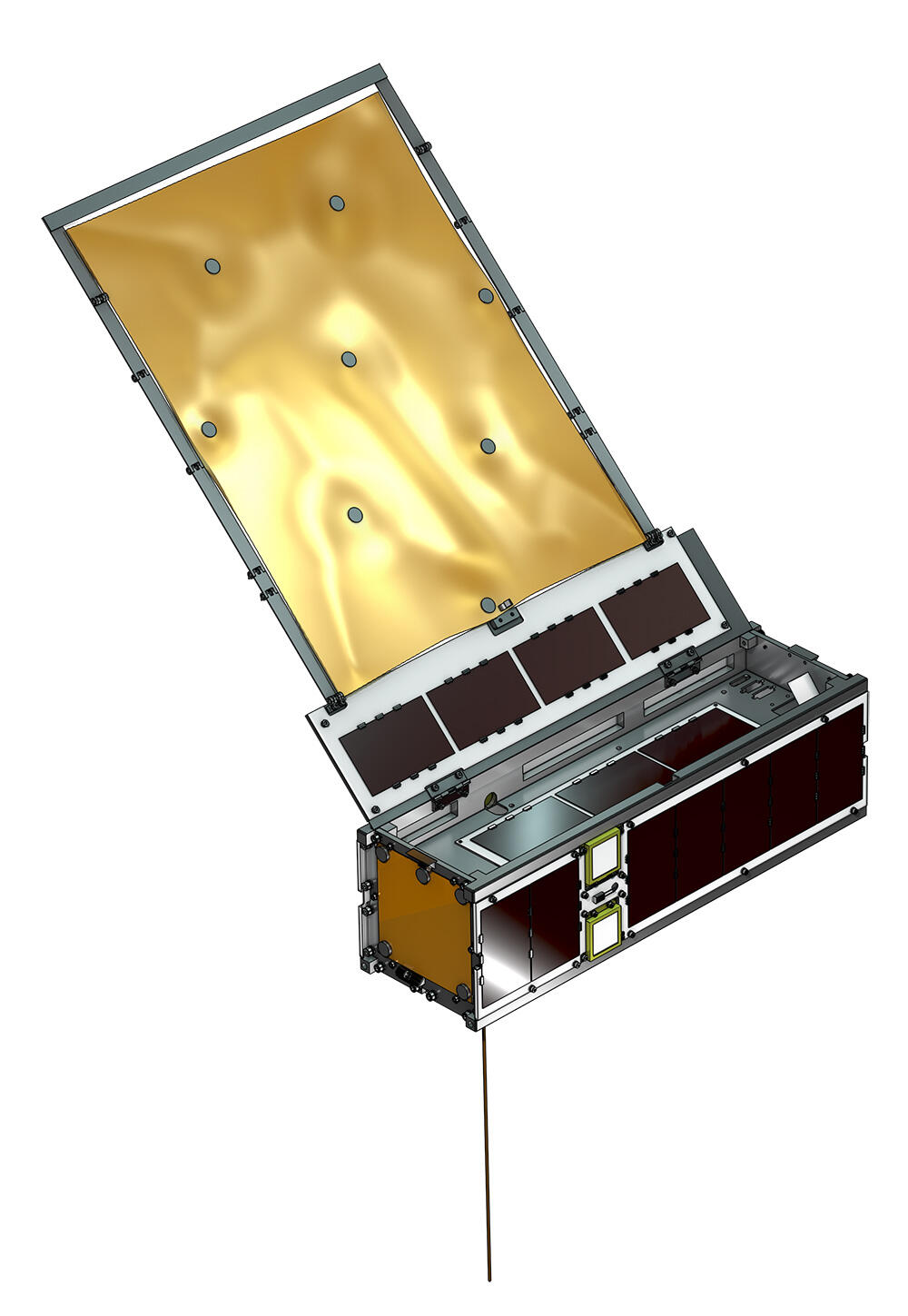
Advanced Satellite Toward Exploration of dust enviRonment with In-Situ Cosmic dust sensor (ASTERISC) developed by the Chiba Institute of Technology
KANEKO
In one of the experiments, we will observe micro space debris by using the CubeSat named "ASTERISC" (11 cm x 11 cm x 34 cm), which was developed by the Chiba Institute of Technology. ASTERISC is equipped with a large membrane-like dust sensor to check the amount of space debris hitting the membrane. As for the movement of large debris around the earth, modelling has been progressed, but for micro debris, we have no data. ASTERISC enables us to observe such debris.
TAMESUE
Does it mean that you will check the quantity and amount of debris hitting a membrane installed in space?
KANEKO
Yes. With the membrane-like sensor, we can check the size and speed of debris hitting the membrane.
TAMESUE
How large is the membrane?
KANEKO
It is approximately 30 cm x 30 cm.
TAMESUE
It is much smaller than I thought it was. The fact that debris hit that small membrane implies that there are so many debris in space.
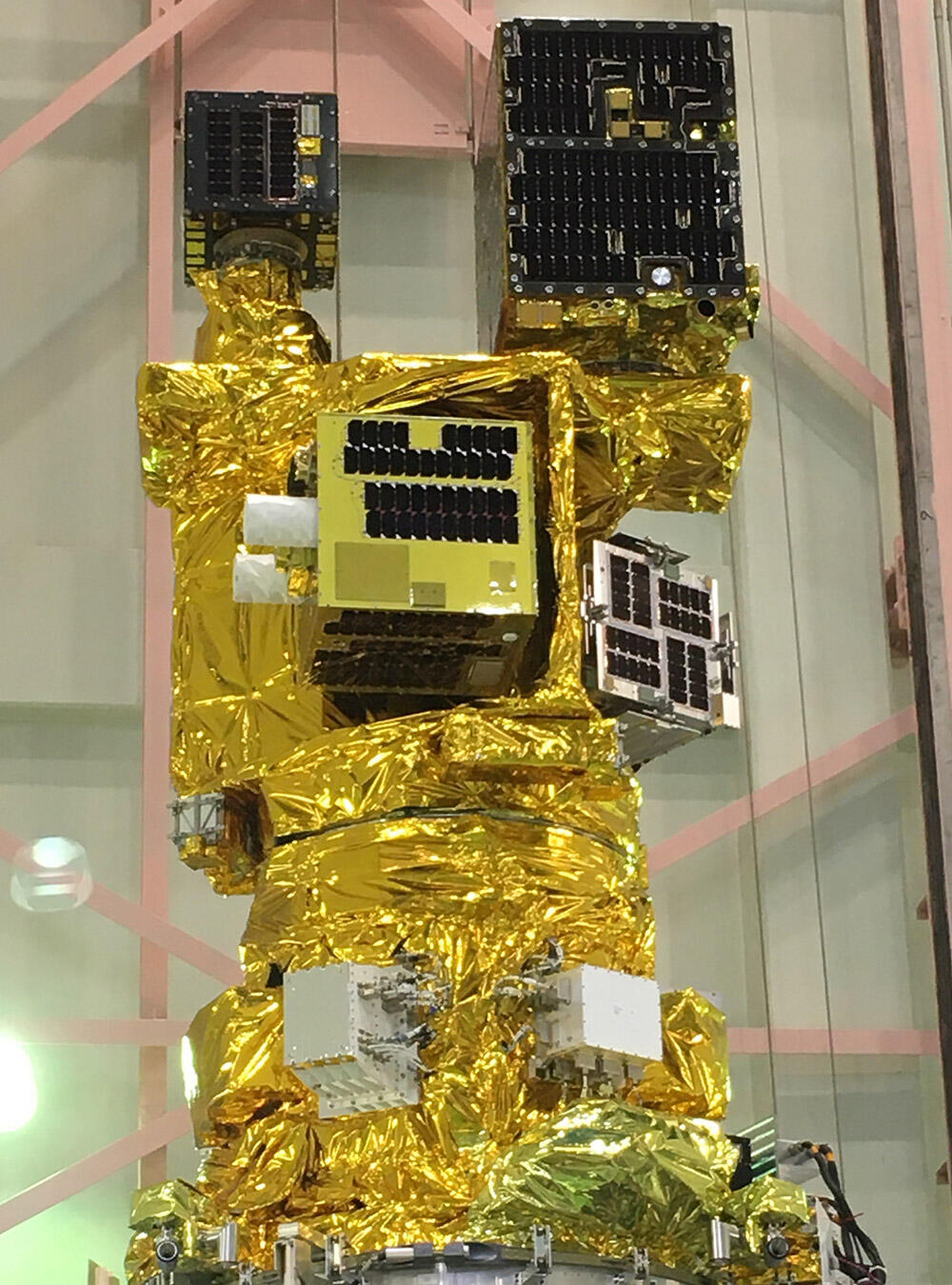
Configuration of Innovative Satellite Technology Demonstration-2: RApid Innovative payload demonstration satellitE 2 (RAISE-2), which carries six components, and a total of eight microsatellites and CubeSats
KANEKO
Participants in this program also include start-up companies. For example, the company named "Amanogi" is developing sensors to measure the positions of satellites by mapping stars. These sensors, called "star trackers" are already available, but they are large, high-performance and expensive. Amanogi is trying to develop much smaller and low-cost ones. By providing these start-ups with an opportunity to demonstrate their products actually in space, we can help them promote the commercialization of the products.
TAMESUE
I would also like to ask you about Earth observation by using satellites. Through Earth observation by a satellite, can you obtain data that are quite different from those obtained by observing the planet on it?
KANEKO
As a feature of Earth observation by a satellite, you can observe the planet on a global scale. This is possible because the satellite is orbiting around it. I engaged in the development of the satellite named "IBUKI" (GOSAT: Greenhouse gases Observing SATellite) in the past. It is a satellite to measure the content of carbon dioxide, and we can detect an increase in the content in a certain area on the earth by referring to the global data provided by the satellite. I think satellites provide us with a very effective tool for the observation of global events.
TAMESUE
I once read a book about space and astronauts written by TACHIBANA Takashi, in which the author described how astronauts' ideas about Earth had changed due to their experience in space. There are actually no national borders drawn on the planet and the impact of CO2 emissions does not differ by country. I think the astronauts who saw Earth from space intuitively felt, "Our planet is one single entity."
In the future, the space industry will be more closely connected to daily life
KANEKO
The Innovative Satellite Technology Demonstration Program is also intended to increase Japan's global competitiveness by giving support to the industries, thereby contributing to economy and benefiting society at large.

TAMESUE
The term "IT company" began to be used about 30 years ago, perhaps because companies were divided into those that were using IT and those that were not using the technology at that time. Now, however, all companies are using IT. The same thing might apply to space. In the future, there might be no companies that are not connected to space. Objective Earth observations made by using satellites will contribute to dramatic growth in various fields. Also, in the world of sports, the video technology made it possible for athletes to obtain data about their physical movements, which helped them substantially increase their athletic abilities. Now, I think video images are utilized for almost all sports.
KANEKO
I agree with you. In car navigation systems and smartphones, the GPS technology is used to obtain location information. GPS is an easy-to-understand example of the technologies that were initially developed as satellite technologies in the United States but are now used in our daily life. I think connection between the earth and space will be further enhanced toward the future. Recently, SpaceX of the United States has started a project to launch several ten thousand small satellites to build a ceaseless communication link across time and space. These projects will benefit people on the earth.
TAMESUE
What you said implies that the field will expand magnificently, and maybe the national government should demonstrate leadership in the field.
KANEKO
For GPS, Japan launched its own local positioning satellite, which has made high-precision positioning possible even for places between tall buildings and others for which such positioning used to be impossible. And as you said, the national government and JAXA should demonstrate leadership still in many parts of the field.
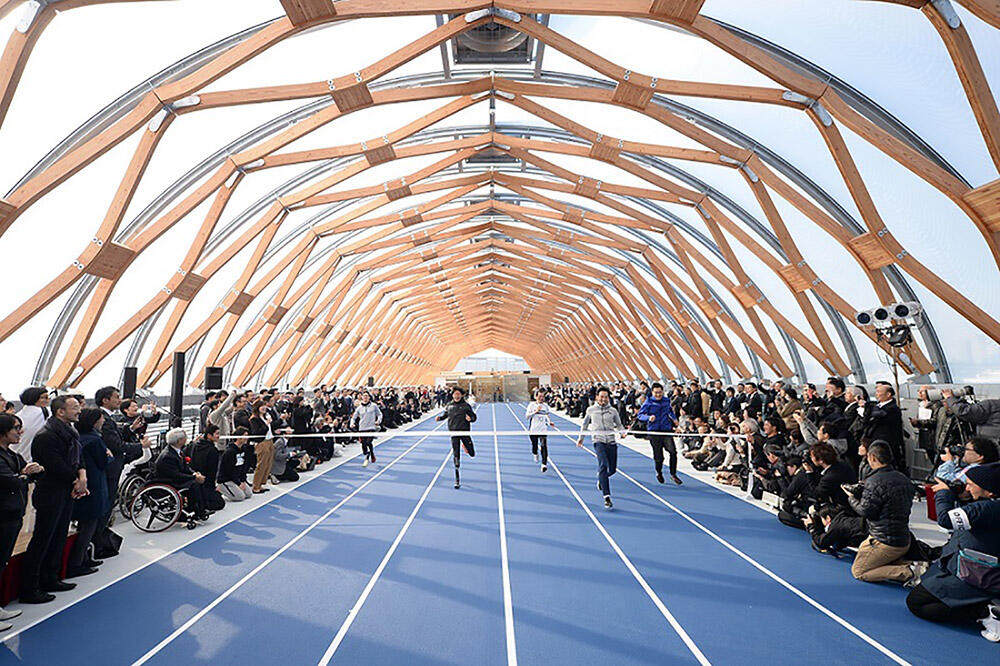
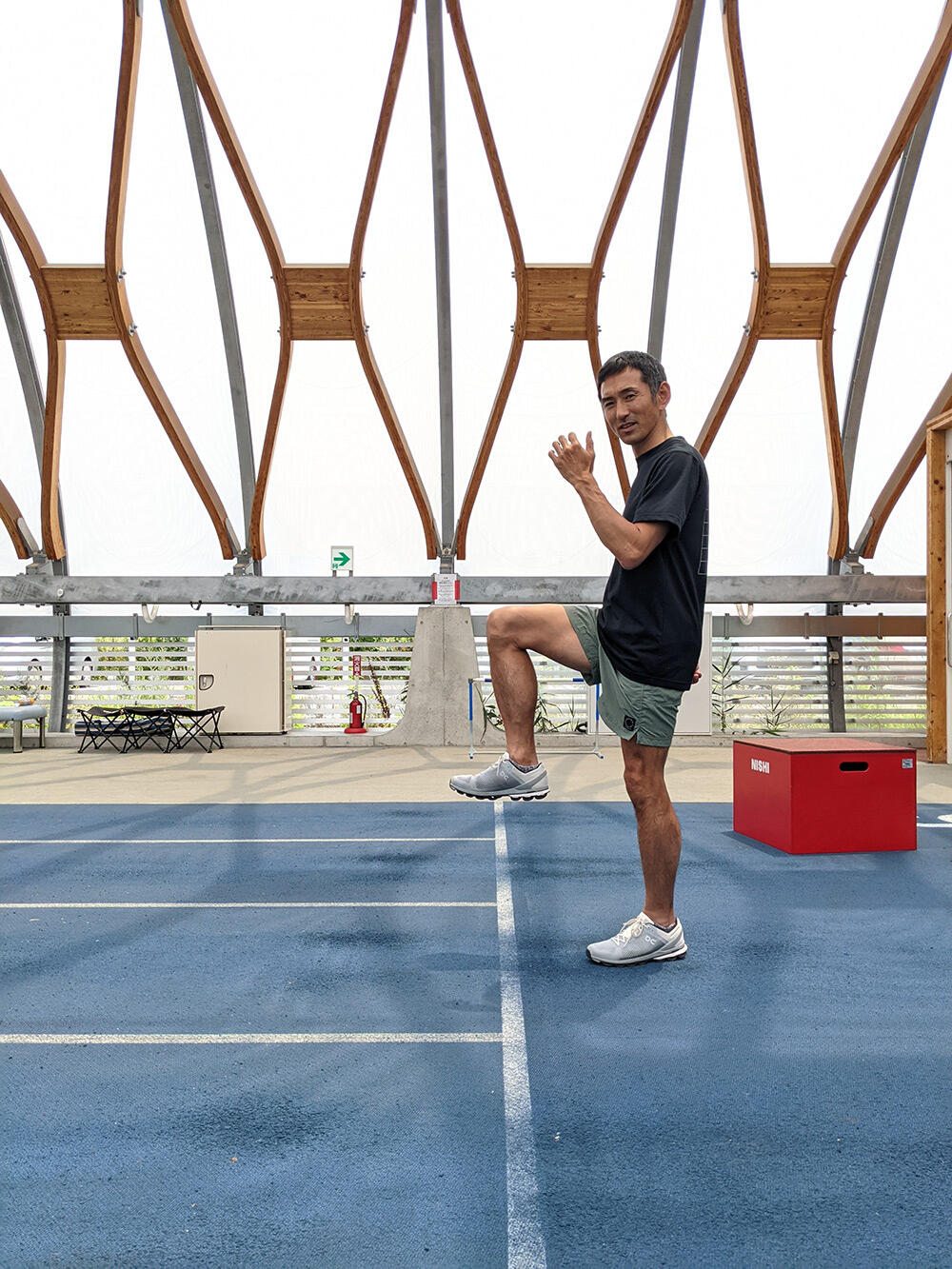
On his YouTube channel "TAMESUE Academy," Mr. Tamesue dispatches information with a focus on understanding humankind from the physical aspect and through sports.Photo provided by Deportare Partners
TAMESUE
Ironically, athletes find themselves contributing to society as a result of devoting themselves to the sport. There are few who start doing a sport to contribute to society. You usually start devoting yourself to a sport as your dream is becoming a hero in the sport, as you want to acquire more skills in the sport, or because you have much curiosity for the sport. However, after you reach a certain stage in the sport, you begin to feel like contributing to society through the sport and also feel some kind of responsibility. Athletes need to be somewhat simple-minded, and if they feel a sense of responsibility in doing the sport, they can no longer be simple-minded and have heartache, thinking "I just want to satisfy my own curiosity without giving consideration to society, but the biggest world competition, which is my goal, exists for people in the world to enjoy watching it." While feeling this kind of dilemma, athletes gradually find out for what they are doing the sport. For sports to continue to be needed by society, it is very important for athletes to contribute to society through the sports, which I think many of athletes re-recognized this summer.
KANEKO
Keeping a balance between curiosity and social contribution is indeed important also for space development.
TAMESUE
The essential value provided by athletes might be something like the value provided by "a canary in a coal mine." Athletes show "what will happen if you try this" by using their own bodies and thereby contribute to improving society. Sports are very primitive and powerfully stimulate your emotions. Hitler utilized this power for propaganda, but there are no "good" or "bad" sports. However, sports can be used in a good way for world peace, diplomacy and education, and I think it is important for athletes to recognize this fact.
KANEKO
We engage in space development of course because we have intellectual curiosity about it, but JAXA's mission is to contribute to society and people. It is part of my job to release information about the contribution that we can make to society through the Innovative Satellite Technology Demonstration Program. We have already been contributing to society by making achievements in the program and communicating this fact to more people, which is in turn raising the public awareness of the program and leading to the participation of new players in the program.
TAMESUE
You are thereby executing a virtuous cycle.
KANEKO
Yes, indeed. However, I also want to include challenging technologies in our target.
TAMESUE
You want to mix something interesting in it.
KANEKO
Exactly. For the further development of the program.

Thinking how to encourage people to take on challenges from the viewpoints of personal characters and culture
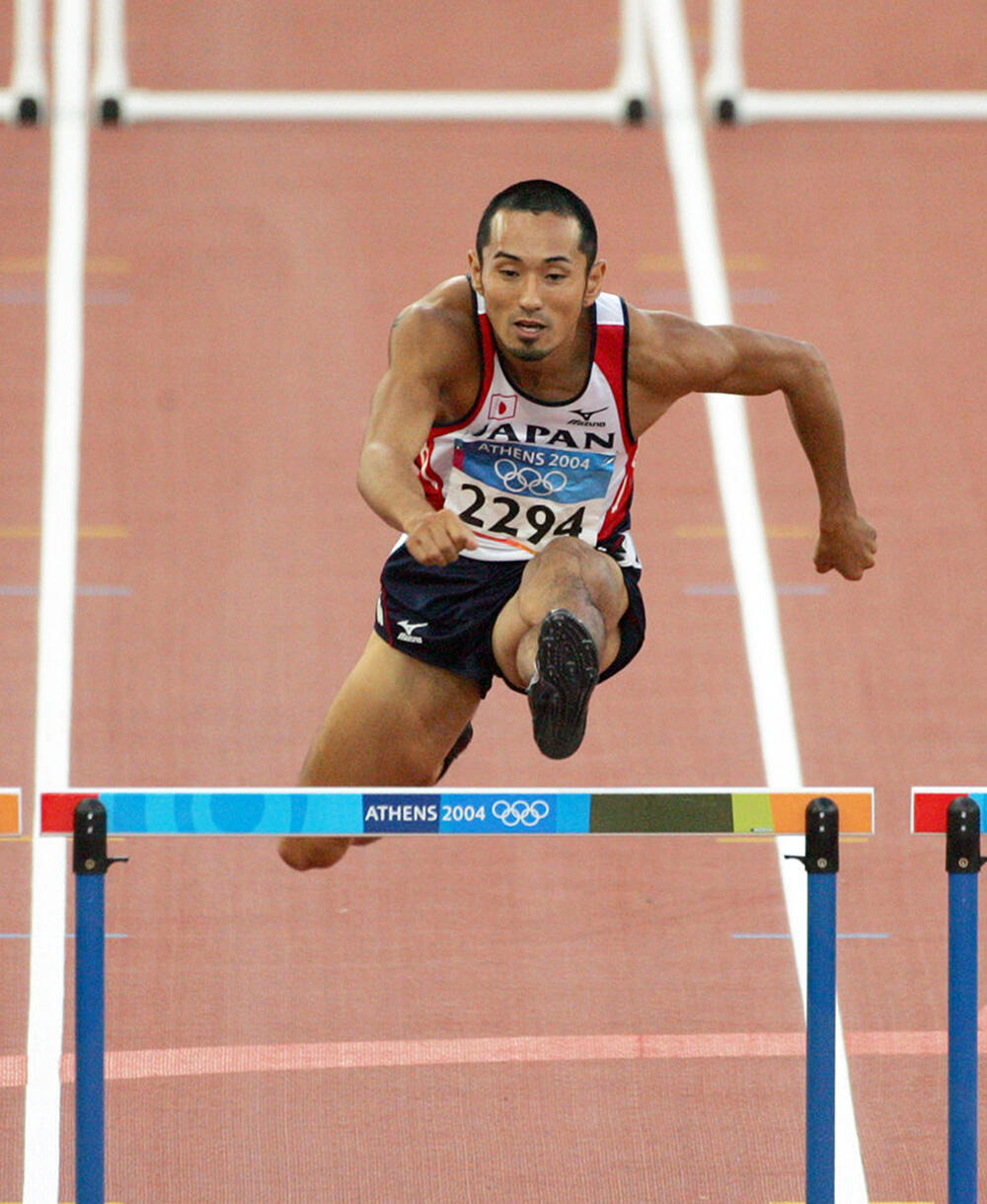
Mr. Tamesue is the Japanese record holder for men's 400-meter hurdle (as of September 2021). The photo was taken in the 400-meter hurdle preliminary round at the 2004 Summer Olympics in Athens.Photo provided by Gekkan Rikujo Kyogi
KANEKO
I am constantly thinking how I can find people who are willing to embrace challenges.
TAMESUE
In track and field sports, athletes compete as individuals and do not need to practice with others in principle. However, they may dramatically increase their athletic abilities through team training. When the ace of the training team further increases his/her ability, it will not have much impact on other team members, but when an average athlete suddenly improves his/her ability in the team, its atmosphere will dynamically change. What I want to say is that whether or not you can encourage people to take on challenges depends not only on their personal characters but also on the local environment and culture. I think the United States has already built up a nationwide system to encourage athletes to take on challenges.
KANEKO
Yes, indeed the United States has such a system.
TAMESUE
In order to provide athletes with an environment in which they can embrace challenges in a spontaneous manner, it is first of all necessary to appropriately evaluate those taking on challenges. It is also essential to diversify the evaluation methods. If an athlete receives instructions only from one powerful coach, the athlete will be evaluated by one single way, which might make it difficult for the athlete to achieve further growth at other places. If an athlete is encouraged to take the risk of embracing a challenge and is appropriately evaluated for it in multiple ways over a length of time, that person will be able to achieve further growth. Usually, however, athletes do not take on dramatic challenges and instead repeat setting a more ambitious target toward the same direction. But some crazy ideas may be implemented for athletes depending on the culture of the sport organization to which they belong.
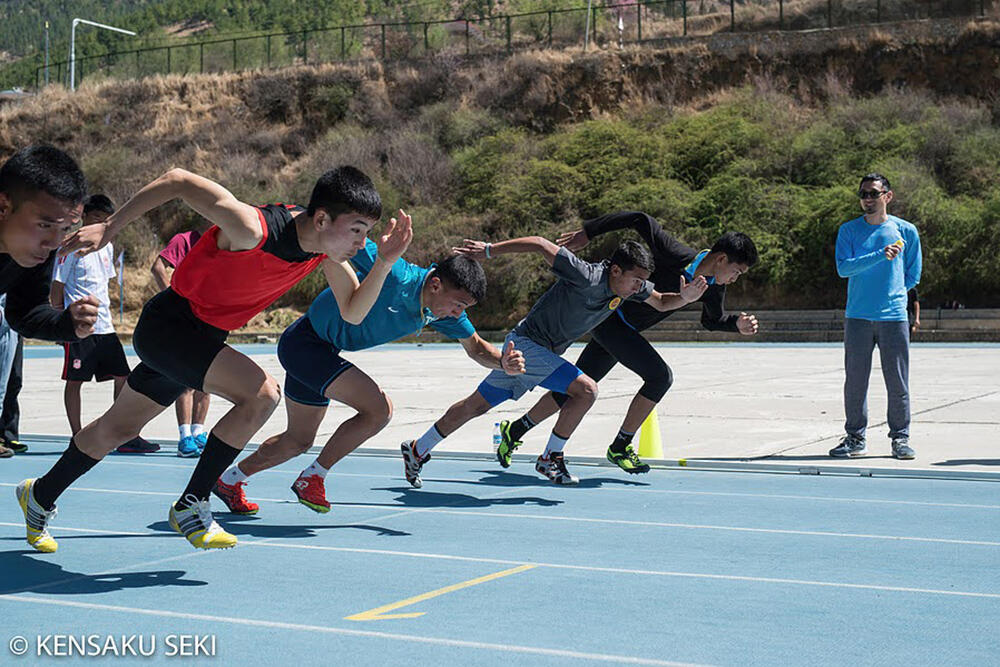
KANEKO
I see. It is true that you are influenced by the environment in which you are placed.
TAMESUE
When I was living in San Diego, I had an opportunity to listen to children's dreams, including a dream about space, and I thought it important for children to have such a dream.
KANEKO
I agree with you. I have visited various places with Japanese astronauts for lecturing, and children attending the lectures listened to the astronauts with stars in their eyes. The lectures on space gave motivation to children, which I thought was important. The Innovative Satellite Technology Demonstration Program is also intended to promote human resource development. In Innovative Satellite Technology Demonstration-2, which we will launch soon, a CubeSat developed by kosen or colleges of technology will also be sent to space.

KOSEN-1 is a technology demonstration satellite developed by 10 colleges of technology for the observation of radio waves emitted from Jupiter.
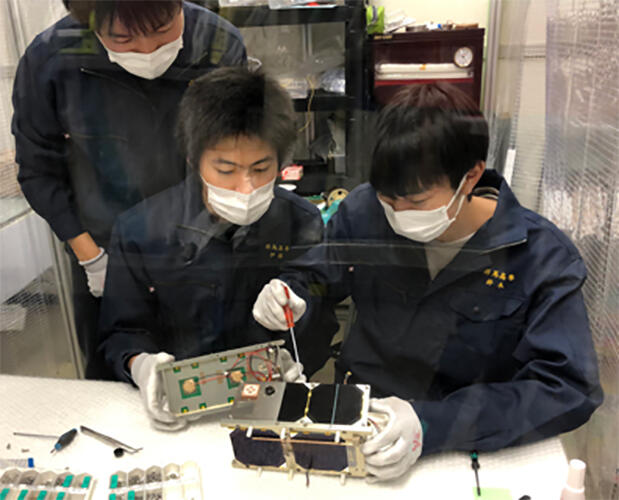
Development of KOSEN-1 by students
Photo provided by National Institute of Technology, Gunma College
TAMESUE
It is indeed important to increase the number of people engaging in the field. In track and field sports, you compete how fast you can run and how far you can throw or jump, and these provide the basis for all sports. In the track and field sports, you can complete not only with others but also with yourself by comparing your past records with the present records. Both children and adults can "feel" the range that is within their arms' reach. Also, for running, athletes know how fast they can run, and it is quite important for them to experience an increase, albeit small, in their speed. When teaching children, I give priority to helping them to experience such an increase, thereby encouraging them to think that they can expand their own limits day by day. This way of thinking is important in any fields, I think. It will give you a driving force to think that you may be able to achieve more than you expect you will and will help you make your dream come true.
KANEKO
Seeing the actual launch of a rocket might also help you expand your sensibility, values and potential. Now, due to the COVID-19 crisis, it is difficult for you to see it on-site, but I hope that many people will see the launch in real time through online media, which will make them feel closer to space.
TAMESUE
Oh, seeing it in real-time will have impact on what they think. The viewers will undoubtedly feel something new.

Holding the Olympics in space? There are possibilities that can be identified only in an extreme situation
KANEKO
Mr. Tamesue, I was strongly inspired by the activity that you organized in Marunouchi, Tokyo in 2007. In "Tokyo Street Track and Field," you held a competition not in an athletic stadium but on the street in Marunouchi, with an eye to raising the public's awareness of track and field sports. What led you to hit upon such an innovative idea?
TAMESUE
I decided to hold the event because I got prize money when participating in a TV quiz program (laughs). As for the main reason, track and field sports had not been attracting the numbers of spectaculars that were enough to fill the stadiums, and I therefore decided to hold a track and field competition in a place visited by many people. I found it interesting to do away with the stereotype idea that the track and field events are held in athletic stadiums. I wonder how you can do sports in space with zero gravity. Perhaps in space, basketball will be played on a court that is different from the conventional one (laughs). I would like to develop a "space sport."
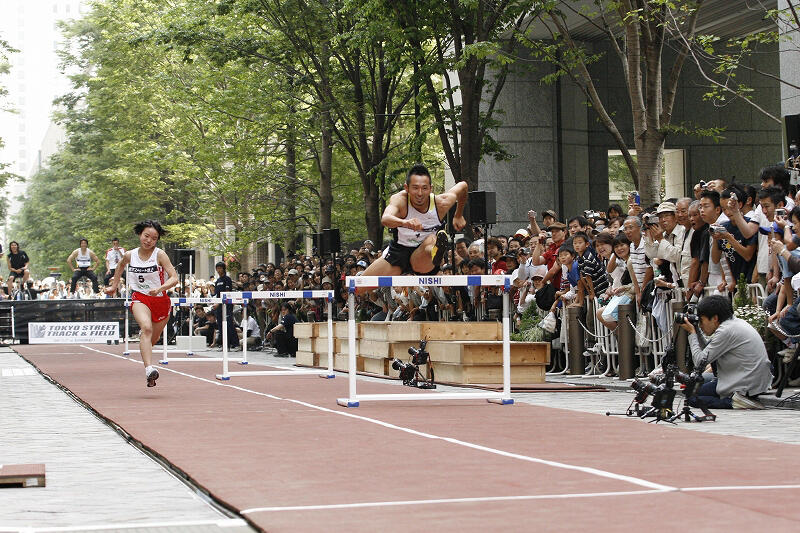
KANEKO
That's interesting. Maybe in the future we could hold the Olympics at the space station.
TAMESUE
I am also interested in the physical changes that astronauts have experienced. I have been giving insight into human beings from the physical aspect as my lifework. For example, you walk in an unconscious manner. None remember how they started to walk. You do not know when and how you started to walk. You also run unconsciously, and running is a sport that belongs to an unconscious world in a certain sense. To what extent do people physically behave unconsciously and consciously? What does it mean to be conscious? This question is not directed only to athletes and is actually related to all people's daily life. What will happen to people when they are placed in an extreme situation and in a closed place with zero gravity? I saw Usain Bolt running in a state of zero gravity, and he was running rather slowly (laughs). Even Bolt cannot run fast without kicking the ground with his feet. This made me re-recognize the fact that gravity, which we take for granted, is truly important. In an extreme situation, I think you will be able to make more findings without being limited by existing frameworks or premises.
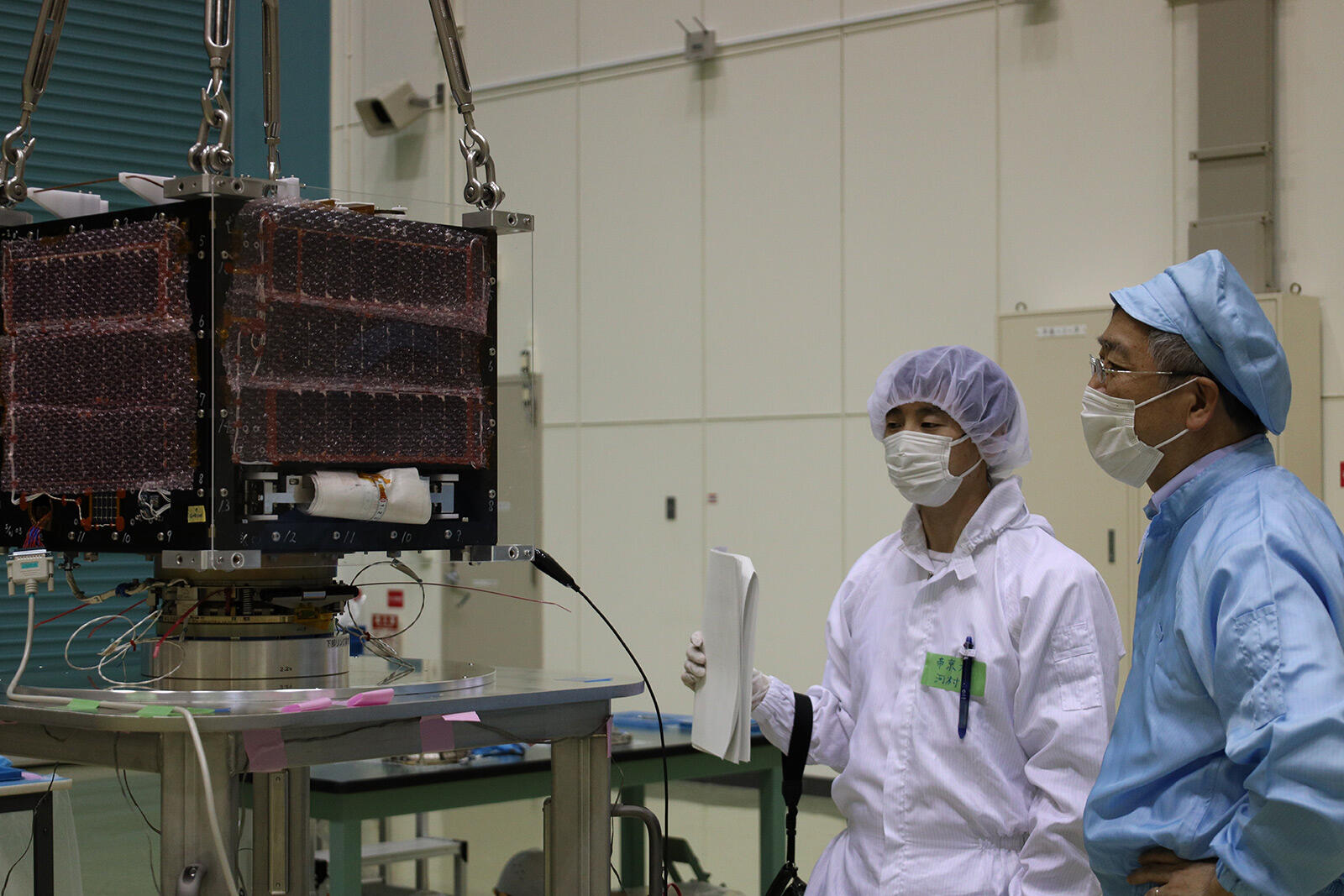
Group Head Kaneko attending the test on TeikyoSat-4, which is one of the microsatellites to be launched in Innovative Satellite Technology Demonstration-2 (right person in the photo)
KANEKO
JAXA engages in space development on the precondition that it will implement all projects as planned by assuming all possible cases, but while implementing some projects we might make unexpected findings. We of course work to predict the results, but the actual results might be different. In space we have so many new possibilities and we will continue to implement the program until the launch of Innovative Satellite Technology Demonstration-7. I hope we will be able to make new findings and demonstrate how we can make use of space more in our missions.
Profile
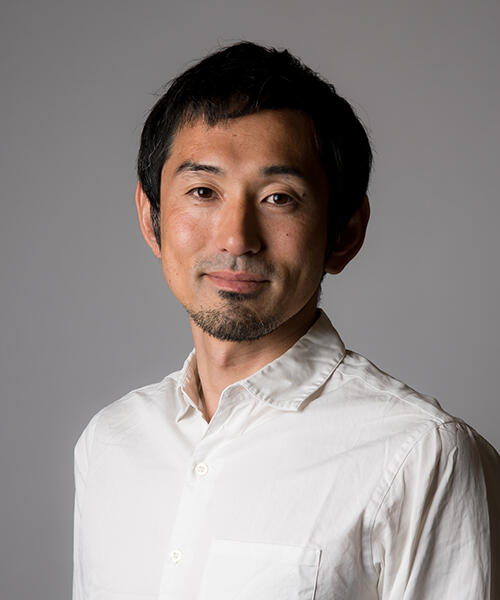
TAMESUE Dai
Former track and field athlete
Born in Hiroshima. Became the first Japanese to win a medal in a world sprit competition. Japanese record holder in men's 400-meter hurdle (as of September 2021). Presently conducts activities as a writer and also manages a business. Representative of Deportare Partners and director of the Shin-toyosu Brillia Running Stadium. Operates the YouTube channel "Tamesue Academy." Goodwill ambassador of UNITAR. Has been interested in fishing recently.
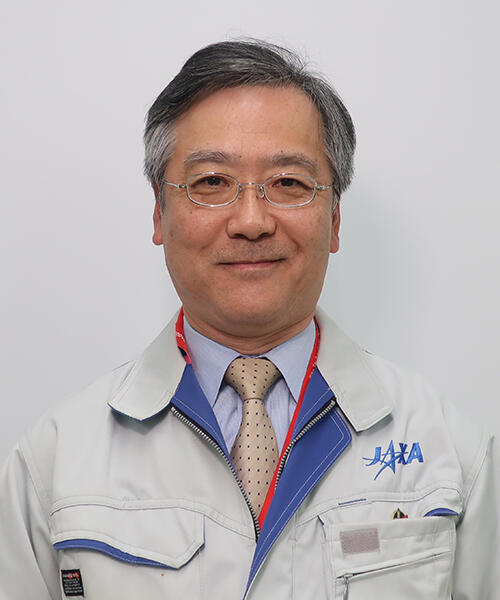
KANEKO Yutaka
Head of the Innovative Satellite Technology Demonstration Group
Research and Development Directorate
Born in Nagano. Project Manager for Innovative Satellite Technology Demonstration-2 and Demonstration-3. Conducted research for lunar and planetary exploration and engaged in developing the "IBUKI" (GOSAT: Greenhouse gases Observing SATellite) and the Super Low Altitude Testing Satellite (SLATS) before assuming the current position. He likes traveling (in particular to hot springs).
All the images are copyrighted ©JAXA unless otherwise noticed.
- Home>
- Global Activity>
- Public Relations>
- JAXA’s>
- JAXA's No.85>
- Special Talk: The Special Environment of Space Stimulates Your Curiosity